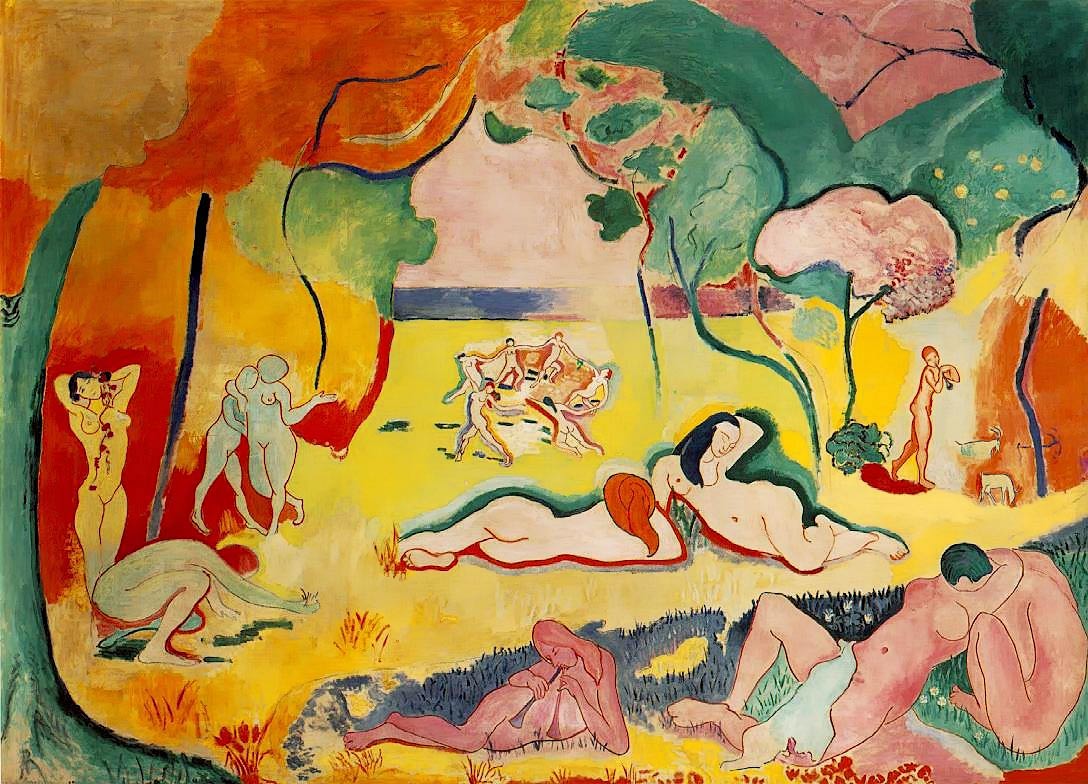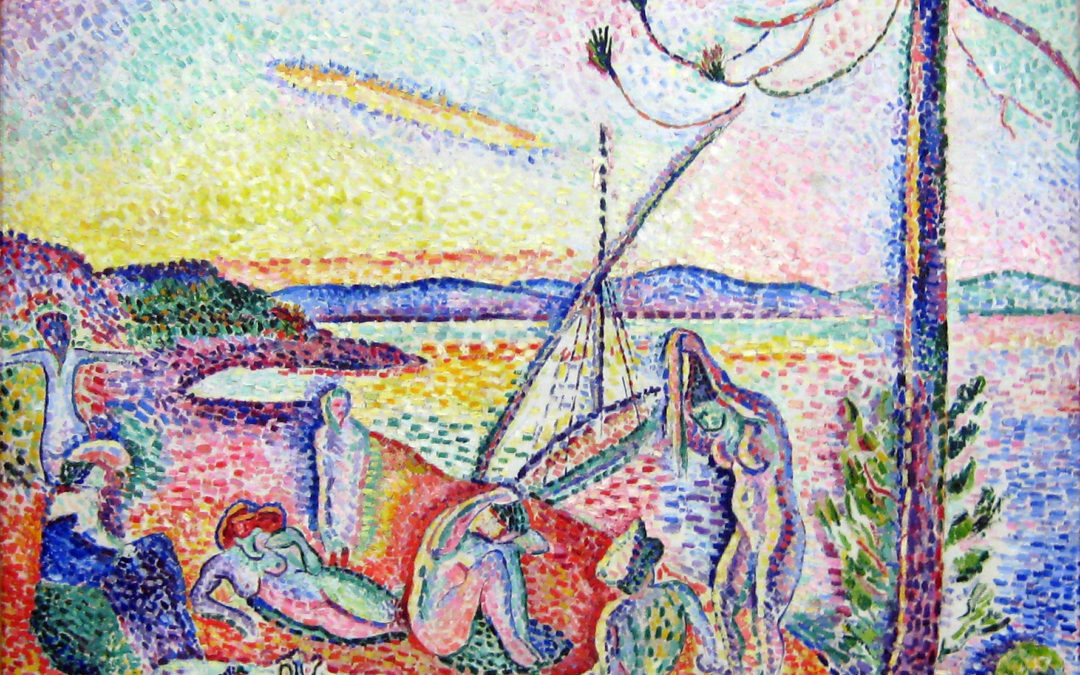Luxe, Calme et Volupté, or Calm, Luxury, and Sensual Pleasure, was Matisse’s shimmering beach picnic at Saint-Tropez, was a belated response to Édouard Manet’s Luncheon on the Grass (1864).
Painted in Saint-Tropez, Matisse’s atmosphere vibrates with glowing reds, golds, and blues of a late afternoon that contrasts with the calm repose of the figures. Customarily among the French, Matisse does not use pique-nique because this is an outdoor event. The title is from Charles Baudelaire’s “Invitation to a Voyage,” [“L’invitation au voyage”] (1868), a dreamy love poem about an imaginary voyage to the Land of Cockaigne a couplet of which is “Là, tout n’est qu’ordre et beauté,/ Luxe, calme et volupté.” The picnic atmosphere conforms to Matisse’s sensibility of color and harmony, explained in his “Notes of a Painter “ (1908): “Work of art must be harmonious in its entirety; for superfluous details would, in the mind of the beholder, encroach upon the essential elements.”

Bonheur de Vivre, The Joy of Life, or 1905/06), oil on canvas. Barnes Foundation
The following year, Matisse completed The Joy of Life [Le Bonheur de Vivre] (1905-1906), a lovers’ picnic where the company is congenially gathered for pleasure. There is a picnic cloth, though there is no food or drink.
The motif of the foodless picnic is common among other French artists of the period: Georges-Paul Seurat’s Sunday Afternoon on the Island of La Grande Jatte (1884-1886), Pierre Puvis de Chavannes’s Between Art and Nature (1888), Paul Signac’s Harmonious Times (1895-1896), Paul Gauguin’s Where Do We Come From? What Are We? Where Are We Going? (1897-1898). Henri Toulouse-Lautrec’s Partie de Campagne, usually translated as Picnic in the Country (1897), shows a couple in a dogcart off for an afternoon outing.
See Henri Matisse. “Notes of a Painter “(1908), trans. Alfred H. Barr, Jr. in Henry Matisse Retrospective Exhibition. New York: Museum of Modern Art 1931; Charles Baudelaire. Flowers of Evil (1857/68), http://fleursdumal.org/poem/148

